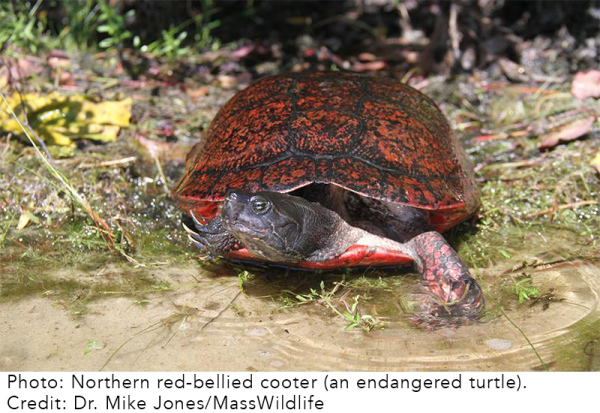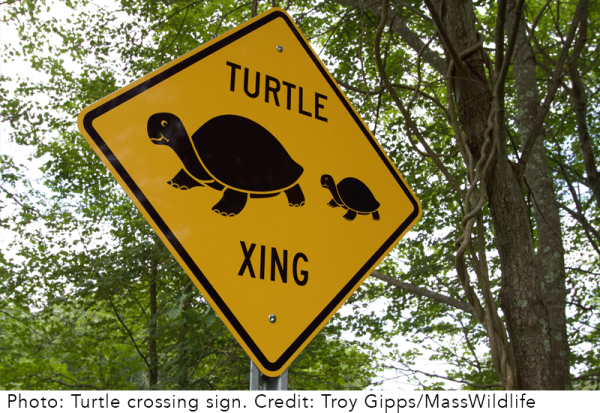

|
Across Massachusetts, spring is the season of movement. Hibernating animals emerge from their winter resting areas in search of food and mates. Turtles are no exception. From mid-May to early July, thousands of turtles throughout Massachusetts travel to new areas to find food and nest. You may find turtles on roadways, in your backyard, or other unexpected locations as they move across the landscape to find resources they need to survive. Even if it’s not apparent to you where they’re headed, turtles have a keen sense of direction and may be on their way to wetlands or open, upland sites such as lawns, gravel pits, or roadsides for nesting. If you find a turtle, do not move it far away.
“Adult turtles can live past 80 years. Young turtles and eggs, on the other hand, have a variety of predators and a low chance of reaching adulthood,” says Dr. Mike Jones, MassWildlife State Herpetologist. "This is why it's especially important to protect older adult turtles from cars, especially during this time of year when turtles are crossing roads more frequently." Losing any adult turtles, particularly adult females, is a serious problem that can lead to the eventual local extinction of a population. See more about turtles crossing roads in our video.
Tips for Helping Turtles
As you drive throughout Massachusetts, keep turtles and other animals in mind. Follow these three easy steps to help ensure that our turtles have the best chance of survival this spring.
Massachusetts is home to ten different native species of turtles, not including five species of sea turtles that frequent our coastal areas. Six of the ten species are protected under the Massachusetts Endangered Species Act. Learn more in our Guide to Turtles of Massachusetts.
Press inquiry? Contact Marion Larson at marion.larson@mass.gov.
|
|